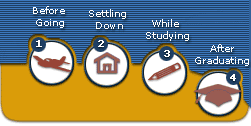 |
 |
 |
|
|
 |
|
|
 |
 |
| Privacy Policy |
| Disclaimer |
| Terms & Conditions |
 |
||
 |
Write right, as writers write. Right? | |
|
Manuals of Style and Guides to Correct Written English
Basics Here are a couple of brief, inexpensive, easy to follow books that will help you to begin to improve your English writing skills. The Elements of Style, (4th Edn.) by William Strunk and E. B. White This is a classic, and itself a pleasure to read. To some extent, this book is out of date, but in no sense is it incorrect. It does not cover all the ground covered by a full-length style manual, but what it covers, it covers with charm and insight. Get it. Write Right! (3rd Edn.) by Jan Venolia This is breezy and contemporary. Venolia goes into more detail about simple mechanical issues (like punctuation and spelling) than Strunk and White do, but not into as much detail as a full-scale style manual would. It also complements Strunk and White by being more forgiving of contemporary usage. As a bonus, it is very inexpensive. Writing with Sources, by Gordon Harvey This short book costs almost nothing, but it gives you advice that could save you from getting expelled. In the U.S., the one thing you must never do is plagiarize. If you do, you will probably fail your class, and may even be suspended or expelled from school. In addition to talking extensively about plagiarism, this book discusses how to correctly quote from sources and cite them. It is also up-to-date with information on electronic sources. Harvey's discussion about how to make use of the thoughts of others while still doing original work is particularly valuable, especially for those who are unfamiliar with the standards and assumptions of U.S. college writing. A Rulebook for Arguments, (2nd Edn.) by Anthony Weston An excellent, brief, and inexpensive resource for the student who is beginning to write argumentatively. Also introduces the basics of critical thinking - that is, of informal logic. The concept of "a sound argument" is central to the intellectual culture of the United States to a degree that will surprise some students. Why risk not knowing? Hard Core Style Manuals These books attempt to be complete and thorough in their coverage of written English. Each has a slightly different audience in mind, but all are properly "academic" in their advice. MLA Handbook for Writers of Research Papers, (5th Edn.) by Joseph Gibaldi, Phyllis Franklin The MLA is the Modern Language Association, an important academic organization. The focus of this manual is therefore academic. Includes up-to-date information on using and citing electronic media. A general-purpose, broad-coverage style manual, with everything you'd expect. Widely assigned in freshman composition classes in the U.S. Dull, but accurate. Popular in the publishing industry, this book is particularly rich in material on the mechanics of preparing documents for publication, but also has much information on writing in a style appropriate for academia. Hardest Core: Academic and Professional Style Manuals If you're a graduate student, or just aiming to meet the highest standards of academic usage, these books promise to tell you how. Also included in this section are style manuals for specific disciplines, or specific professional organizations. Don't be afraid! This book, sometimes referred to as "Turabian", is often used by graduate students trying to learn academic writing. It is fairly weak in its handling of electronic media citations, but widely held up as a standard work. It has a better reputation than it probably deserves. Publication Manual of the American Psychological Association (4th Edn.) [sometimes called "the APA Handbook"] This is a style manual widely used, not only by psychologists, but also by others in the social sciences, by social workers, etc. It is inelegant. A flawed book, but you may be forced to use it. This is the standard style manual for writing in medicine and related fields in the U.S. The AMA has one good thing going for it: a very clear citation method. Read this, and find out for yourself. This is the complete account of "MLA Style", aimed especially at academic authors. It also covers many topics, such as the details of copyright law, which are principally of interest to published authors, It should not be confused with the MLA Handbook, discussed above, which is aimed at a more general audience. Writing Philosophy, by Richard Watson This is very clearly written, but fairly specialized. Watson is, refreshingly, very frank about the pragmatic business of getting published in academia. And If You Need a Dictionary... The American Heritage Dictionary (4th Edn.) This unabridged dictionary has a history of being sympathetic to innovations in usage, and to the distinctive character of American English, both spoken and written. A CD-ROM version is also available.
|

|



Home | About iStudentCity | Job Opportunities | Contact iStudentCity Hall
Copyright©2000-2009, iStudentCity.com. All Rights Reserved.